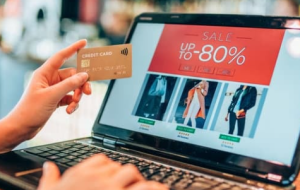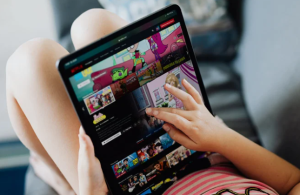Table of Contents
The internet is comfortably the most competitive marketplace on the planet. With so many outlets and options for consumers to engage with, it’s very much a buyer’s market right now. Businesses and brands are having to work harder than ever to stay relevant and give consumers a reason to sign up and, just as importantly, a reason to stick around.
Suppose you’re a small business or fledgling entrepreneur that’s about to enter an already crowded marketplace. In that case, it’s a good idea to learn from the following examples of brands that have successfully devised campaigns and marketing techniques to keep people returning for more.
Pull&Bear’s radical personalisation engages first-time shoppers by visiting one
 Fashion retailer Pull&Bear has tried very hard to succeed with its e-commerce approach. As part of one of the world’s biggest fashion retail groups, the Inditex Group, Pull&Bear was able to call on industry-leading digital marketers to usher in a new era of personalisation for its customers.
Fashion retailer Pull&Bear has tried very hard to succeed with its e-commerce approach. As part of one of the world’s biggest fashion retail groups, the Inditex Group, Pull&Bear was able to call on industry-leading digital marketers to usher in a new era of personalisation for its customers.
Despite having a somewhat strait-laced, traditional reputation, Pull&Bear’s decision to tailor user experiences – without the need for inputting sensitive personal details – has proven something of a masterstroke. Cookies were at the heart of its personalisation strategy, helping them to understand first-time users from the word go to tailor garments and sales for future visits. Giving shoppers too many choices is one of the most common reasons why website visitors don’t convert, so this was always going to have a positive impact on Pull&Bear’s bottom line.
PokerStars Casino’s free spins campaign for new and existing customers
The iGaming sector is notoriously competitive, with more online casino operators seemingly entering regulated markets by the week. It’s the challenge of well-established sites to find creative ways to attract first-time users and engage with existing players by rewarding them for their loyalty.
Although PokerStars Casino may be better known for its presence on the tournament scene, its online casino platform is equally popular and more so now because of its free spins campaigns with no wagering requirements attached. This is a particularly good move, given that wagering requirements are often a bugbear for iGaming customers.
This promotion gives users total clarity that all winnings are immediately paid in withdrawable cash. Furthermore, this promotion is used for first-time and existing players, with new customers accessing it upon sign-up and current customers receiving free spins as a reward for completing certain “challenges” on-site.
Grammarly’s attempts to gamify the user experience for subscribers
 In an era where content is king, cloud-based writing assistance app Grammarly has proven particularly popular. It’s helped content marketers hone their writing skills and craft engaging, unique content that strikes the perfect tone.
In an era where content is king, cloud-based writing assistance app Grammarly has proven particularly popular. It’s helped content marketers hone their writing skills and craft engaging, unique content that strikes the perfect tone.
Gamification is one way of keeping users engaged, creating the sense of a journey taken. In Grammarly’s case, these journeys are venturing from novice to expert writer. Its weekly report functions, outlining writer improvements and points for further work, demonstrate a user’s ability and the app’s general value in content creation through 2023. It can also tease paid-for accounts to free users, promising additional tweaks and highlighting new problems within its paid logins.
Netflix’s content recommendations keep viewers coming back for more
 Netflix isn’t one of the world’s most successful on-demand entertainment platforms for nothing. It works hard to understand new and existing customers in order to eke out every drop from subscribers. The Netflix platform uses previously watched content and weaves this into its algorithm to recommend new shows, movies and documentaries that keep viewers on the hook.
Netflix isn’t one of the world’s most successful on-demand entertainment platforms for nothing. It works hard to understand new and existing customers in order to eke out every drop from subscribers. The Netflix platform uses previously watched content and weaves this into its algorithm to recommend new shows, movies and documentaries that keep viewers on the hook.
Despite the continuing economic situation, it’s a mark of Netflix’s personalisation success that many households regard this subscription as a must-have even in more budget-conscious times.
Apple’s #ShotoniPhone campaign turns a negative into a positive
It used to be something of a running joke about the inadequate quality of iPhone cameras. Despite their super-slick designs and operating systems, the cameras lacked the depth of many of their competitor smartphone devices, especially in dark and dimly lit environments.
So, instead of acknowledging the bog-standard clarity of its photos in low lighting, Apple opted to showcase the special moments its owners manage to capture with iPhone cameras. The #ShotoniPhone social campaign went viral within a matter of hours. It rapidly demonstrated that the device’s camera was more diverse than the mainstream media and reviewers let on, turning what could have been a damaging piece of PR into a hugely positive story.


